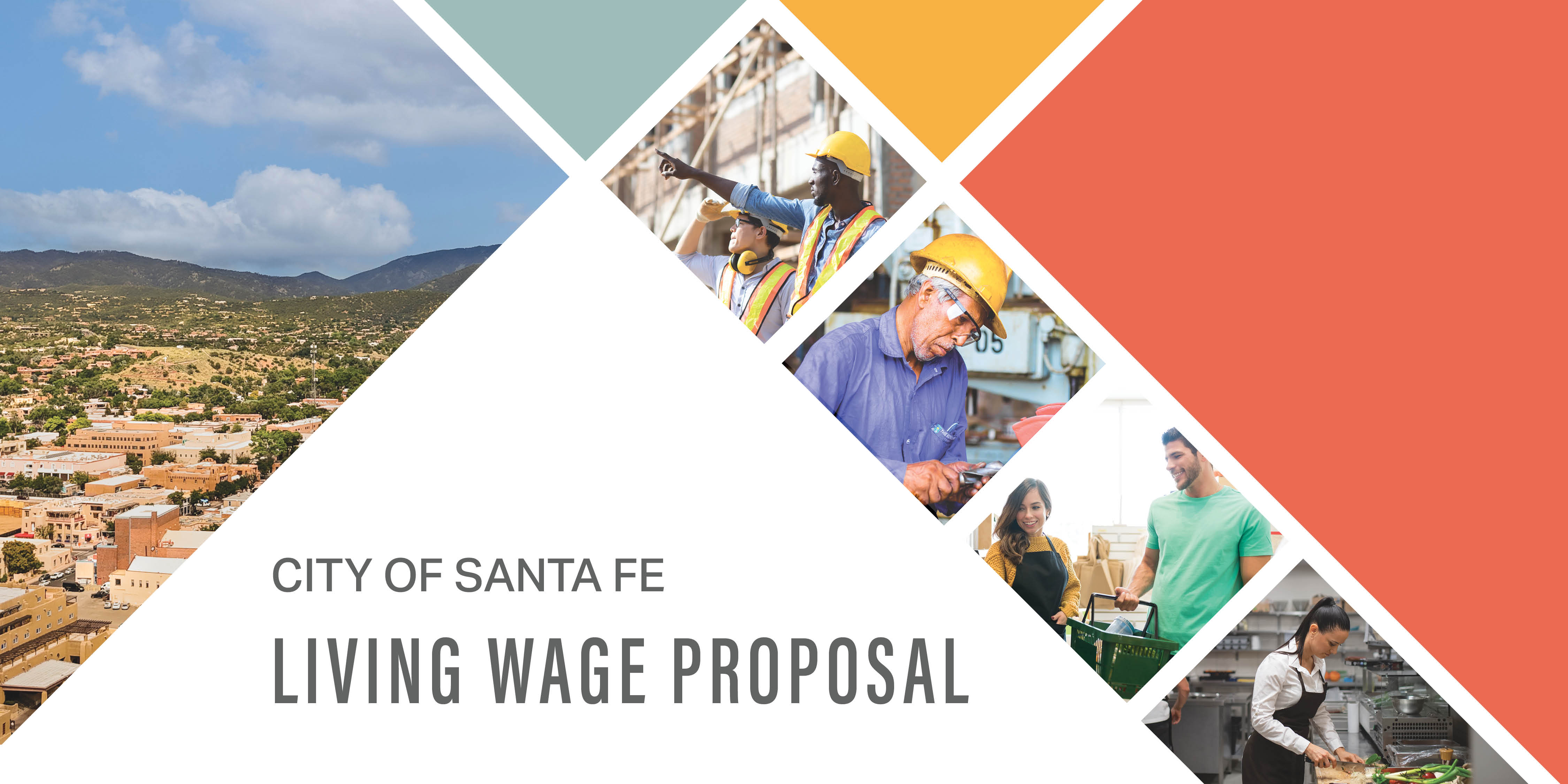Events
Living Wage in the City of Santa Fe

In November 2025, Mayor Alan Webber signed Santa Fe’s new living wage ordinance into law. The update is designed to keep Santa Fe diverse, equitable, and affordable for working residents, while addressing rising housing costs and stagnant wages.
Santa Fe's future depends on ensuring that working people can afford to live in the city they serve. Rising housing costs and stagnant wages have created a growing gap. Since 2016, rents have increased by 74 percent, while home prices have risen by 80 percent, and median incomes have increased by only 36 percent. One-third of Santa Fe households are now rent-burdened, and many working families are being forced to relocate to lower-cost communities.
The city has made progress on housing, with thousands of new apartments built or in the pipeline, along with programs such as the Affordable Housing Trust Fund and updated zoning ordinances. However, leaders say wages must also be addressed to help close the affordability gap.
- Raise living wage to $17.50/hour after a 1-year evaluation period effective January 1, 2027.
- To support City of Santa Fe employees sooner, the ordinance ensures that any city staff currently earning below this amount will receive the increase a full year earlier, beginning January 1, 2026.
- Maintain provisions for tipped workers, Medicaid-dependent nonprofits, and health/childcare benefits.
- Annual adjustments based on 50% Western CPI + 50% HUD Fair Market Rent for a 2-bedroom unit.
- Annual increases capped at 5% and never decreased, regardless of economic conditions.
- Santa Fe becomes the first U.S. city to directly link a living wage to local housing costs.
- Housing costs are the largest burden for low-wage workers. Since 2016, rents rose 74%, home prices 80%, and median incomes 36%.
- One-third of households are rent-burdened; many working families are relocating to lower-cost communities.
- The living wage works alongside housing efforts, including new units built or in the pipeline, Affordable Housing Trust Fund programs, and updated zoning ordinances.
- Ensures the city remains diverse, equitable, and affordable for residents who work here.
Community members, employers, labor, and nonprofit stakeholders provided input to help shape the ordinance.
- In-person listening session: September 15, 2025, 6–8 p.m., Southside Library
- Virtual webinar: September 16, 2025, 6–8 p.m.
- Business community meeting: September 23, 2025, with the Office of Economic Development
- Living Wage Workshop: September 9, 2025, Teen Center, public input and feedback session.
- Original living wage ordinance enacted in 2003; Santa Fe was the second U.S. city to do so.
- Purpose: require wages sufficient for workers and families to live a decent and healthy life in Santa Fe.
- Past increases: 2004 – $8.50/hr, 2006 – $9.50/hr, 2025 – $15/hr.
- Previous increases tied to Western Region CPI; tips, health care, and childcare count toward wage.
- Some exemptions exist for Medicaid-funded nonprofits.
- Housing costs are the largest cost burden for low-wage workers in Santa Fe.
- Since 2016, rents have risen 74%, home prices 80%, median incomes only 36%.
- One-third of households are rent-burdened; many long-time residents are moving to lower-cost communities.
- Linking the living wage to housing costs is a first-of-its-kind approach to maintain real purchasing power.
- Santa Fe Forward estimates 3,270 new housing units needed by 2050.
- Since 2018, production has rebounded with 400+ units permitted annually.
- Approx. 2,500 multifamily units under construction and 4,000 more in the pipeline.
- Programs include Affordable Housing Trust Fund, inclusionary zoning updates, CDBG funds, and City-owned land for housing.
- Proposal discussed with Chamber of Commerce, hospitality industry, hospitals, nonprofits, labor unions, and community organizations.
- Findings: impact of $15/hour living wage is limited; many employers already pay above $15/hour.
- One-year evaluation period allows assessment of economic conditions before implementation.
- Keeping a mix of workers who can live and work in Santa Fe is crucial for the city’s character, culture, and authenticity.
- Living wage update paired with housing programs addresses affordability and workforce retention.
- Annual formula ensures the wage keeps pace with inflation and housing costs, supporting sustainable livability.
